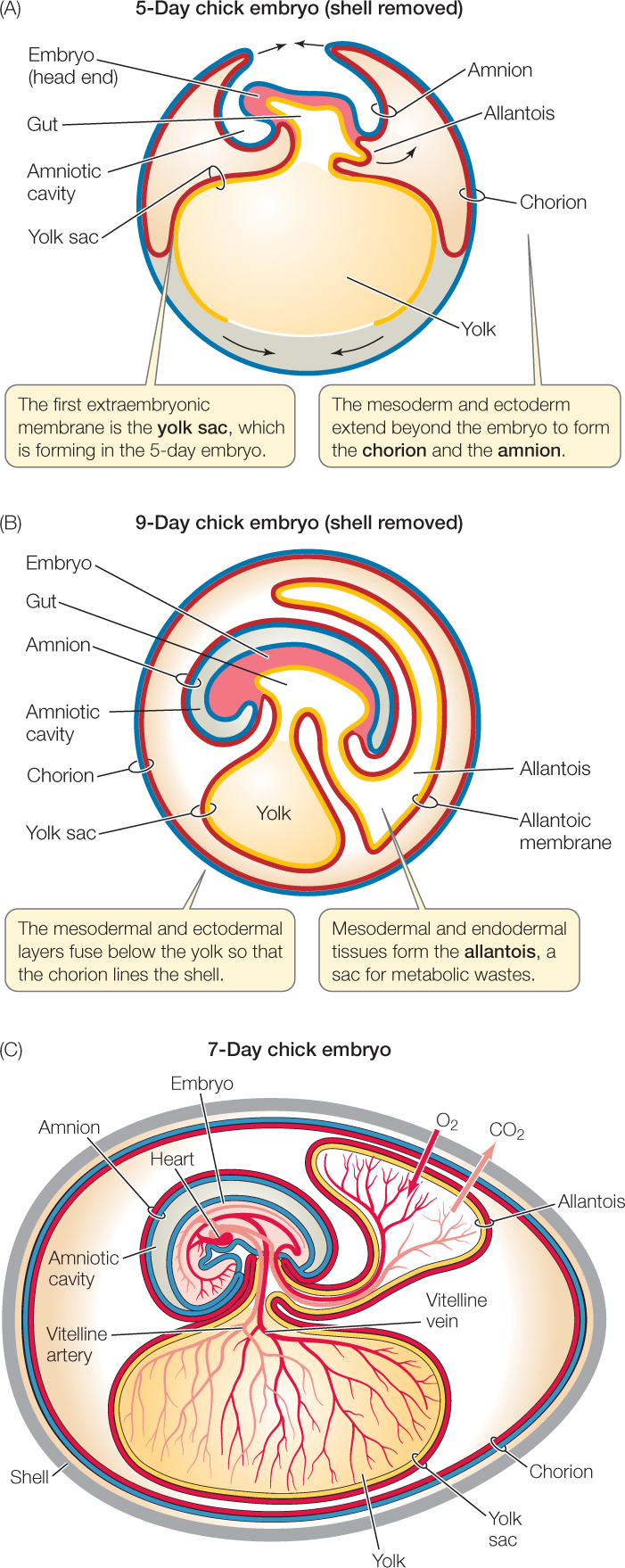
Figure 38.18: The Extraembryonic Membranes of Amniotes In birds, other reptiles, and mammals, the embryo constructs four extraembryonic membranes. (A,B) Membrane outgrowth and fusion in 5- and 9-day embryos. (A) Developing amnion and chorion form from ectoderm and endoderm as seen in this 5-day chick embryo. The membranes will fuse when they meet dorsally (arrows), enclosing the embryo in 2 envelopes. The yolk sac and allantois form from endoderm and mesoderm. The yolk sac grows around the yolk (arrows) and the allantois forms a pouch. (B) Membranes surround the embryo in this 9-day embryo. Some will continue to expand as the embryo grows, but the yolk sac shrinks as yolk is used by the embryo. Fluids secreted by the amnion fill the amniotic cavity, providing an aqueous environment for the embryo. The allantois stores the embryo’s waste products. The allantoic membrane will become pressed against the chorion and shell and functions in gas exchange between the embryo and its environment. (C) Developing chick in shell showing development of the circulatory system, which is well underway by day 7. Only the yolk sac and the allantois are capable of making blood vessels. As a result, they are involved in nutrient transport and gas exchange.